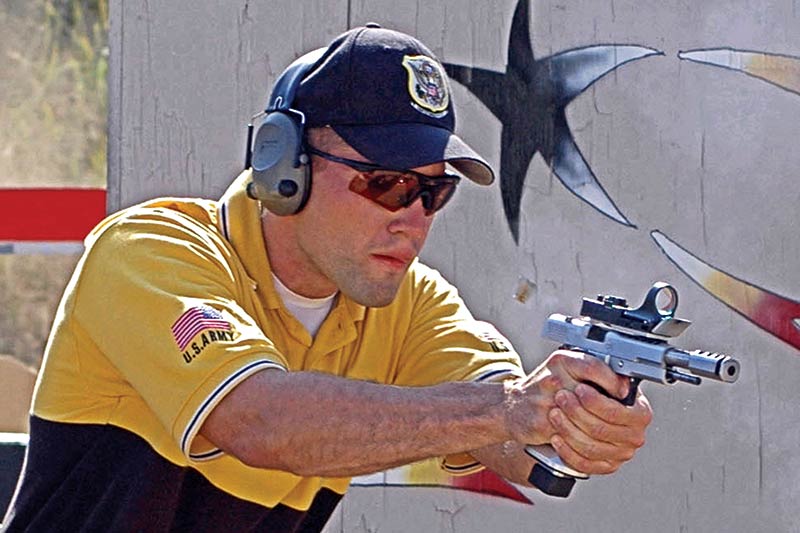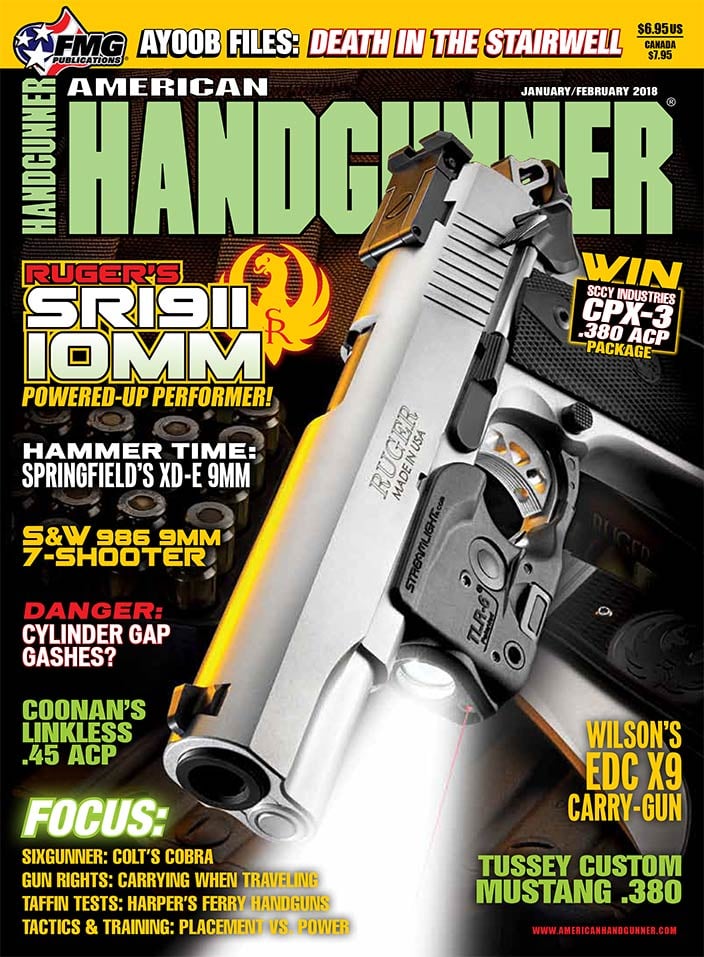Stylish Or Stable?
Technique matters in developing shooting skills. Good coaching in basic techniques can save a novice from having to learn by trial and error. Just don’t get so hung up on form and style you forget the objective. I get the impression some shooters are more concerned with looking good — than with results. One skill many seem to struggle with is shooting fast doubles. They see videos of top competitors firing two shots per target — bambam bambam — and naturally want to do the same. I hope they notice those shooters are actually hitting the target, with most hits in the A-zone.
The problem is it’s hard to do, and the only way to learn it is through live fire, and lots of it. Skills such as trigger press and reloads can be learned by dry fire. Fast shooting adds the element of timing, combining both trigger and recoil management. In a recent column I recommended a drill, from seven yards, where you draw and fire six A-zone hits on a USPSA target. Train until you can consistently get the six hits in under two seconds. This is a tough drill, and some make it even tougher by getting hung up on style.
Like Figure Skating
Style counts in some sports, not in others. Competitive figure skaters are judged largely on style and grace. It’s an extremely difficult sport — I’d wager few if any — you or me — could do a jump with one spin, much less a triple or quad. But just doing it isn’t enough. To win at the highest levels it has to be done with style.
With Hockey, no one cares about style. What’s important is to score more goals than the opposition. If you can score goals (or keep the opposition from scoring) no one worries if you’re on the edge or the flat of the skate blade. Heck, they wouldn’t care if you had the skates on the wrong feet.
Good shooting is about results. What matters are hits (or in USPSA competition, the best balance of speed and accuracy). There are no points awarded for style.
From what I read online, apparently in fast shooting it’s a grave style error if the trigger finger comes off the face of the trigger during the forward movement. Why? If there’s daylight between trigger and trigger finger, then it’s trigger slapping! Neh, neh, neh … I saw trigger slapping! Points deducted for poor form! A 3.0 from the Russian judge!
I say, who cares? The shooter just fired six A-zone hits in a time from first to last shot of maybe 3/4 of a second. Can you do it? Can you do it six times, or 10 times in a row? Just about every top shooter I know tells me they slap the trigger when going all-out.
Too Many Rounds
One of our long-time subscribers sent a note to His Editorship Roy recently, asking if the forward movement of the trigger finger should be different with different handgun designs. He had grown up shooting revolvers and had recently acquired a couple of GLOCK’s. Should he train his trigger finger to move forward far enough for the short GLOCK reset?
Part of the message from “Bob” said, “Anderson recently wrote on double taps and recommended 30 sets of 6 shots, three times per week for six weeks to master a trigger with a short reset. Whew, that’s a lot of ammo and time!”
Actually, that’s not what I said. Since I shoot all types of handguns I’d never go to the effort of learning a technique specific to one design. In fact the article said the opposite: “… give the trigger finger full forward movement to allow the trigger to reset … any balks in fast shooting always occur on the forward movement of the trigger finger. Balks happen when the shooter starts the next press before the trigger has reset.”
Any speed advantage from moving the trigger finger forward “just far enough” is minor, and is not worth the effort of learning, or risking a balk. Failing to let the trigger reset can cost you a match — or get you killed.
Training the trigger finger to move back and forth smoothly and rapidly is hard enough, without tailoring it to different guns. The article said six months, not six weeks. I wrote this in full awareness few handgunners will ever fire 500–600 practice rounds per week (a modest schedule by top-shooter standards, by the way).
Just a reminder, there are no shortcuts, no secret clever tricks.






